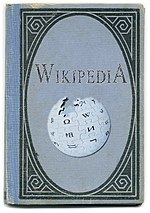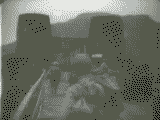From Wikipedia, the free encyclopedia
Please click here to leave me a new message. I will reply on your Talk page.
DOB: July 4th , 1962 - Yes July 4th! And I'm a Canadian Five pillars of Wikipedia here how to edit a page Tutorial how to write a great article manual of Style ask me anything Remember Gold is where you find it. At least I think.
Canadian Lived in or visited [ edit ] International Travels [ edit ] This editor is a Grognard Mirabilaire 1937 Wikipedia First Edition.
Award
Giver
Date
Lady Aleena 1 November 2007 (UTC)
Experienced Editor
Earth is the third
planet from the
Sun and the only
astronomical object known to harbor
life . It is the densest planet in the
Solar System and the largest and most massive of its four
rocky planets . About 29 percent of Earth's surface is
land , with the remaining 71 percent
covered with water and much of
Earth's polar regions covered in
ice . Earth's interior is active with
a solid-iron inner core ,
a liquid outer core that generates
Earth's magnetic field , and a convective
mantle that drives
plate tectonics . Earth formed
more than 4.5 billion years ago . Within the first billion years of
Earth's history ,
life appeared in the oceans and began to affect
Earth's atmosphere and surface. Since then, the combination of Earth's distance from the Sun, its physical properties and
its geological history have allowed life to
evolve and thrive, including
more than 8 billion humans as of 2024. Earth is orbited by one permanent natural satellite, the
Moon , which
orbits Earth at a radius of 384,400 km (238,900 mi) and is roughly a quarter as wide as Earth. This photograph of Earth straddling the lunar horizon was taken in 2015 by
NASA 's
Lunar Reconnaissance Orbiter while located 134 km (83 mi) above the crater
Compton , visible in the foreground. To capture the image, the spacecraft had to be rolled 67 degrees to its side, and slewed with the direction of travel to maximize the width of the lunar horizon, while traveling more than 1600 m/s (3600 mph) relative to the surface.
Photograph credit: NASA / Goddard Space Flight Center / Arizona State University ; edited by Bammesk
Proof that fascism can be beaten, Allied Military crosses the Ludendorff Bridge near the end of World War Two
This is user is into tropical Fishkeeping [ edit ]
Works in progress here [ edit ]
This editor is a
Novice Editor and is entitled to display this
Service Badge .
This editor is a
Yeoman Editor and is entitled to display this
Service Badge .
The Photographer's Barnstar
In recognition of your outstanding photographic contributions both here at at Commons, I proudly present you with with this award. Keep up the great work! Kralizec! (talk ) 15:12, 1 December 2008 (UTC)















